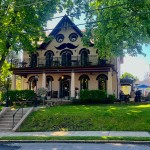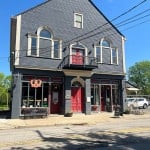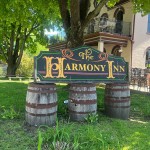In Harmony, PA You’ll Find Peace, Love and (Of Course) Harmony
The small town in Butler County, a former religious community, is rife with history and charm.
It’s called Harmony, and it’s aptly named.
The historical little town is just outside of Zelienople, about a half-hour drive from Downtown Pittsburgh. It boasts good food, friendly people, quaint shops and a storied history dating back more than 200 years.
The town was settled in the early 19th century by the Harmony Society, a group of mostly German immigrants fronted by pietist Johann Georg Rapp. The Harmonists, who lived communally, produced wine and other agricultural exports; despite their economic success in modern-day Butler County, Rapp would eventually sell the town to the Mennonites, led by Abraham Ziegler, and move the Harmonists to New Harmony, Indiana.
Because celibacy was a tenet of Harmonist life, the group eventually died out — but its history remains on display in this small town.
No visit to Harmony would be complete without a stop in the Harmony Museum, centrally located along Mercer Street, one of the town’s main throughways. Located in what was once the Harmonists’ warehouse, the museum offers a blend of Harmonist and Mennonite artifacts, as well as a few items from the town and the larger Western Pennsylvania area. There’s also an exhibit dedicated to the Lenape (Delaware) Native Americans who lived on this land long before the Harmonists.
A guided tour takes you into the original wine cellar and then to a back room in the museum’s gift shop, where you can see Victorian medical artifacts from the town’s 19th century doctor and an old telephone switchboard from Zelienople — because the state’s switchboards were shut off alphabetically, this one was, for a while, the last in Pennsylvania.
You can also pick up a map in the museum for a self-guided walking tour that will take you through downtown Harmony and surrounding areas. The tour will take you to locations important to both the Mennonite and Harmonist societies, including the Mennonite Meetinghouse and Cemetery, the Harmonist National Bank and various residences of important names in town history.
This is a little town where old and new are intertwined in a way that makes for a unique and well-rounded visit. In a general/candy store called Harmonie Laden, you can buy treats, jewelry, candles and other gifts from local makers. The town’s central restaurant, the Harmony Inn, supports local businesses such as Mancini’s bread (baked fresh in Pittsburgh), Pasture Perfect Beef (produced in Mercer County) and Murray’s Chicken (family farmed in southwestern Pennsylvania). If you’re in the mood for hearty fare, choose a classic German meal (like the chicken spaetzle) and a trendy IPA. The service is fast and friendly, with the option for outdoor dining on a rustic patio or seating inside what was once the home of Austin Pearce, a prominent banker, mill operator and railroad executive.
If you’re just after a snack, you’ll find a pair of spots inside nearby historic buildings — Wunderbar Coffee & Crepes, located within a historic opera hall, and Lagerhaus Bakery, just a stone’s throw from the historic Grace Church and Harmony Museum.
And if you’re feeling adventurous, be sure to ask some locals to hear a ghost story or two. There are plenty to go around.
Know Before You Go
Harmony is 30 minutes outside of Pittsburgh, making it a great option for folks looking to get out of town for a few hours. The museum is open for tours Tuesday through Saturday; tour times are at 1 and 2:30 p.m. While it usually isn’t too busy on weekdays, reservations are encouraged for Saturday visits or if you’re traveling with a group of 10 or more.
Walk.
For the walking tour, dress appropriately for the weather. It isn’t a difficult walk, but the sites are spread throughout about 3 miles.
harmonymuseum.org







































